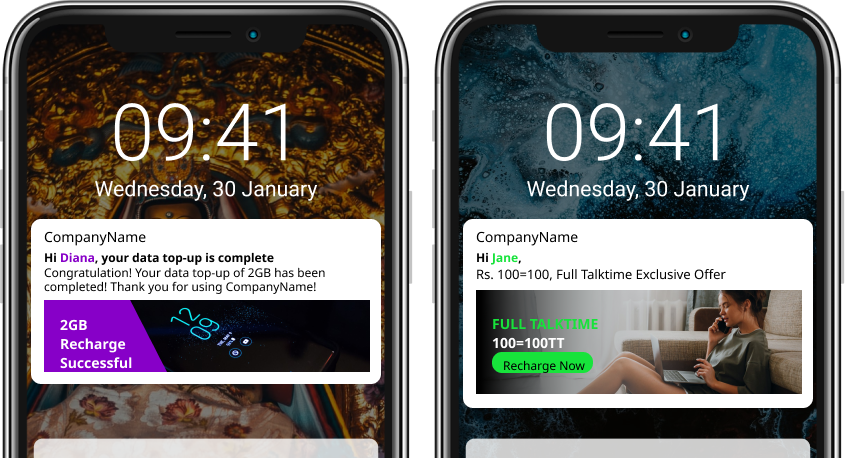It’s not easy being a telecom operator or an internet service provider (ISP) in this time and age. Competition has heated up with all players vying for market share with free calls, cheaper data, and diverse plans to choose from. Add to this today’s empowered customers who lose no time in changing their service providers if they are unable to get their queries answered in a quick and simple manner. For ISPs, customer support-related queries were high enough even before the pandemic, when internet access was needed only for a few hours per day at best. After the pandemic, there has been an all-day demand for connectivity driven by the home office. Also, it has been difficult for customers to physically reach out to service providers for support, and many sales and service centers of telcos and ISPs have also shut shop temporarily. This has shifted the focus on how well such providers are able to serve customers in our changed times.
To remain competitive and ensure they don’t leek customers to rivals, forward-thinking telcos as well as ISPs are focusing on customer experience like never before — improving their CX has become a strategic priority. And to provide an incomparable service experience to each of their digital-savvy customers, these companies are increasingly simplifying and digitalizing their customer support with the help of user-friendly platforms like live chat, WhatsApp Business, and push notifications in addition to the usual SMS and email services. It is safe to assume that the future of the telecom companies and ISPs strongly depends on their ability to take their customer engagement to the next level of digital maturity.
Telecom and ISPs — Top Industries in Need of Customer Support
While offering efficient customer support is important for all industries, day-to-day support is thought to be among the most critical for telecom players and ISPs. Telecom customers reach out to telcos for a variety of complaints — ranging from disruptions in connectivity, being charged for services they did not avail, inaccurate billing, etc. These problems need to be addressed quickly — any friction can reduce customer satisfaction significantly and even lead to churn. ISPs are also expected to deliver customer service that is as speedy as the internet connection they provide. Customers reach out to them for a variety of queries, ranging from slow networks and data transfer speeds, sudden disruptions in connectivity, difficulties in bill payment, to check their internet usage, to receive real-time tech support, for quick bill pay, etc.
Telcos and ISPs traditionally relied on emails and phone helplines to resolve customer issues, but these had their own challenges. Phone lines would often be found busy, as support agents could serve only one customer at a time. Emails would not be opened or replied to immediately, creating frustration for customers. Many providers would hide behind ‘bad’ technology such as canned responses, impersonal contact forms, and do-not-reply emails. Also, support agents might be missing crucial customer data while interacting with customers, and so could not help them quickly and efficiently. Moreover, providers had to maintain large support teams, which increased overall operational costs for the company. This is why forward-thinking providers are increasingly using digital touchpoints like WhatsApp, live chat, and push as additional channels of customer support. Incorporating these as part of their omnichannel strategy is making life easier both for customers as well as providers.
Benefits of Digital Channels for Telecom and ISP Providers
1) Provide Customers the Convenience of Automated, 24/7 Support
Customers often reach out to providers at odd hours when customer support agents may not be available in office. In such cases, offering automated support for routine queries in the form of live chat or WhatsApp proves to be highly effective. There are a number of areas in which automated chatbots can offer support:
- Update address
- Upgrade to a new account plan
- Add new members to an existing plan
- Send out new product or recharge requests
- Request new SIM and track orders
- Answer FAQs on products and services
Such instant responses greatly add to customer satisfaction. In cases of live chat, when human intervention is necessary but there is high traffic and support agents are busy in assisting others, the automated bot can be programmed to inform visitors that they are in a queue and their query will be addressed shortly. It also informs customers how long they need to wait to get their queries answered. Such level of assistance eliminates customer dissatisfaction as they realize that the company values their time.
2) Help Teams Handle Huge Volumes of Queries With Speed and Precision
With more people working from home, the need to optimize call center resources has never been more important. Having just phone helplines for millions of customers overwhelms customer support teams and leaves customers waiting long periods to get queries answered. Platforms like WhatsApp and live chat solve this issue easily, as a single agent can handle multiple chat windows simultaneously, which is simply not possible over a phone call. The agents can handle more complex queries when human intervention is needed, and simple FAQ-like queries (for example, related to SIM card order tracking) can be addressed by rules-based bots. Sometimes, they can share Quick Reply options with customers to spare them the hassle of typing out lengthy queries. This helps to speed up response time and enables agents to close queries quickly. Providers can even monitor their agent’s activity by monitoring their details like login time, total successful and missed chats, their ticket response time, and so on.
3) Keep Casual Visitors Engaged to Capture More Leads
ISPs and telcos can use triggers in their live chat to engage curious visitors in ongoing conversations to identify their intent and turn them into qualified leads. Even for customers who may have opted-in on WhatsApp to know more about a company’s service offering, chatbots can greet them with automated welcome messages, and then move on to sharing product recommendations and limited-period discounts. Live chat attains a number of goals such as:
- Engaging visitors that are idle or about to exit the site to decrease bounce rates
- Customizing conversations based on the customer’s location
- Recognizing returning visitors with personalized greetings
- Saving leads to CRMs
4) Onboard Customers in Minutes With Fully Digitalized Onboarding
As in the banking sector, live chat and WhatsApp have enabled telecos and ISPs to fully onboard their customers online. Customers want to be onboarded in a quick and painless manner, and digital platforms play a great role in ensuring this following all regulatory mandates. Earlier, customers would have to visit a POS, or the provider would send a representative to the customer’s house to collect KYC documents. Now, customers can directly reach out on WhatsApp or live chat and receive guidance on which plan they prefer to select by a bot or an online human agent. After selection, they can upload all their KYC details for verification on the same window. Chatbots can scan their documents and fill all details by connecting to the national ID database, where they can authenticate customer information for local citizens. Foreign nationals visiting the country can be onboarded through the e-visa KYC process. KYC information is updated to the server and the CRM. After proper verification, alert messages are shared with customers about the activation of their account. All this happens at a significantly shorter turnaround time. Added benefits are:
- Lower acquisition costs per customer
- Data accuracy of customer information
- Efficient data capture while onboarding to ensure better cross-sell and up-sell in future
- Ensure 100% compliance with regulatory mandates of a region
- Increased customer satisfaction due to quick processes
- Greater market share
Leading telcos reportedly easily onboard up to 1.5 million subscribers per day, successfully balancing security and convenience.
Sample Digital Onboarding Process for Telecom and ISP Providers:
5) Send Out Proactive Alerts Via Push Notifications and on WhatsApp
Telcos and ISPs can leverage WhatsApp and push in a major way to proactively reach out to customers who have opted-in to remind them about bill payments, KYC updation deadlines, plan expiration dates, upcoming payment dates, payment completed notifications, and more. Push notifications also prevent churn by gently reminding inactive users to keep using services by offering them exclusive discounts. Also, in situations that result in sudden disruptions to connectivity, such as likely outages, the provider can leverage WhatsApp or push notifications to send out quick updates about the situation to millions of customers all at once, instead of panicked customers having to call up customer support. Such prompt alerts add to customer satisfaction and retention greatly.
6) Nudge Customers Toward Purchases With Conversational Messaging
Telecom companies as well as ISPs have a wide variety of pricing plans for both their new as well as existing customers. The more channels they have for promotions, the higher their chances to gain more customers. WhatsApp can prove to be an effective sales support app by enabling companies to sell new plans to customers through promotions and discounts offered on the app. WhatsApp, which is a two-way communication platform, enables companies to reach out to customers with information on upcoming plans that can be more beneficial for customers. They can share visual presentations of the main offers, allow customers to compare their service plans, and guide prospects along the sales funnel. Being a messaging platform, WhatsApp enables customers to ask as many questions as they wish to, like they would at a physical store, before making up their minds. Support agents can also gently nudge customers towards a possible purchase and handhold them at each stage of their journey.
Also, because the chats are carried out on a centralized platform, companies have more visibility into a customer’s behavior. By tracking the customer’s history, (say if they are traveling to a specific country more frequently), chatbots can suggest better international roaming deals for the customer. Providers can also turn simple queries from customers into an opportunity to offer them a better deal, maybe lower rates or a longer subscription period. This increases customer satisfaction as well as sales.
7) Reduce Operational Costs for Service Providers
As per a 2019 McKinsey survey, companies having a large array of digital services score high on customer satisfaction. Not just that, they also manage to lower their cost-to-serve for each customer by 20-40%. Telecom service providers and ISPs are no exceptions. While phone calls and emails are still a key area of support, what digital services like live chat and WhatsApp do is that they offer a host of self-help tasks which customers can complete by themselves, and answer most of the routine queries with automated chatbots, which reduces the need to maintain large customer support teams and lowers overall operational costs.
8) Receive Instant Feedback From Customers Over WhatsApp and Live Chat
With each major provider having millions of customers, it becomes very difficult to collect feedback on their experience with the company. Also, most of the times feedbacks consist of superficial ratings which do not give away much about what problems a customer may have faced while interacting with the provider. Yet, detailed feedback is crucial to understanding how the customers feel about the brand. Live chat and WhatsApp easily solve this problem – at the end of a conversation, chatbots or agents can ask users to rate their experience with the brand by taking short surveys where they can highlight their exact issues. Users also find it easy to leave feedback on the same chat window, so more often than not they complete the surveys. This leaves providers with a wealth of data that they can later analyze to see which areas they need to improve on.
edna is a leading digital communication solutions provider that is revolutionizing the way organizations connect and converse with consumers. For more than 15 years, we have been helping companies to use advanced communication technologies to orchestrate streamlined, programmatic omnichannel communications over all major social messengers, live web and in-app mobile chat, PUSH messaging and SMS. edna is an official service provider for WhatsApp Business, Apple Business Chat, and Viber for Business. We work with 550+ enterprise clients that include leading organizations in Retail, FMCG, Banking, Insurance, Air Travel, Telecom, Hospitality and Healthcare and process 4 Billion+ messages every month. Learn more about our offerings at edna.io





